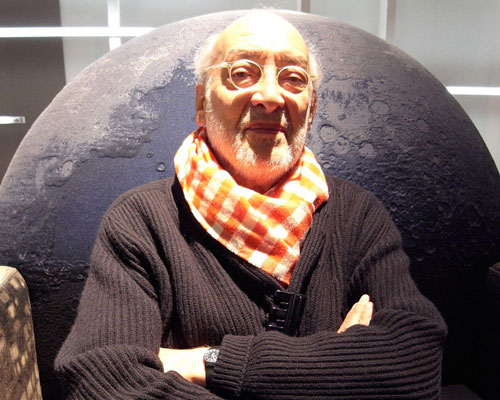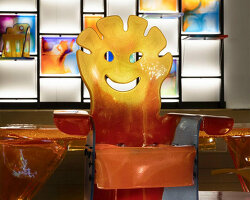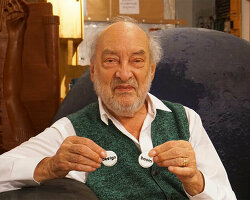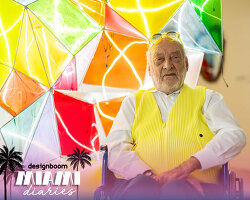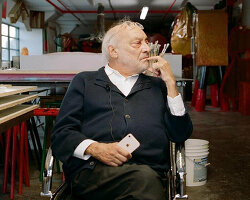gaetano pesceimage © designboom
we met gaetano pesce in milan on 16.04.2000
designboom (DB): what is the best moment of the day?
gaetano pesce (GP): I have no idea, it depends on the day
DB:what kind of music do you listen to at the moment?
GP: any kind of music, my mother was a pianist, I’ve grown up with classic music but I like innovative, progressive music very much, usually popular music, I don’t believe in what they call classic – modern. vivaldi was as important for his time as the beatles or the rolling stones were during my youth, or the police… these musicians give pleasure to people. mozart wrote and played music, which allowed people to dance.
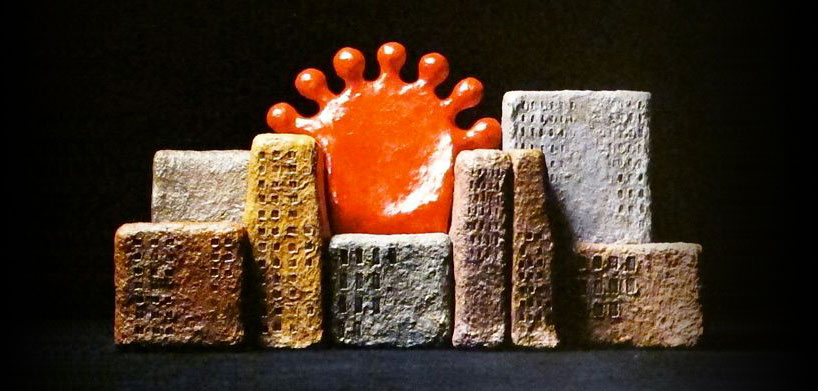
new york sunset, prototype, 1983 courtesy gaetano pesce
DB: do you listen to the radio?
GP: oh, yes.
DB: what books do you have on your bedside table?
GP: I have no books close to my bed, the one that I’m reading on is always nearby, on a table or on a chair… at the moment I’m rereading wittgenstein,”in life, it is not neccessary to do a lot, but to do well” he says something like this, infact he did very little but he is one of the most important philosophers in history.
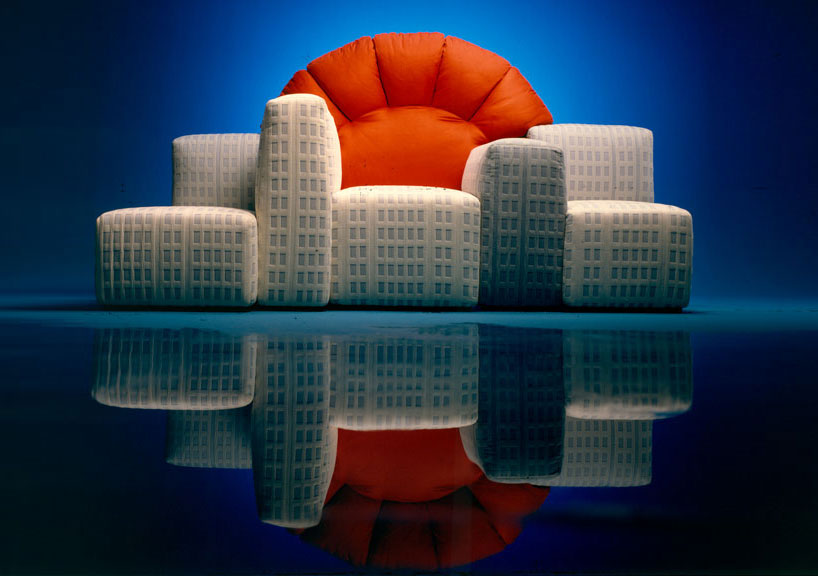
new york sunset, sofa, 1983 produced by cassinacourtesy gaetano pesce
DB: do you read design magazines?
GP: no, yesterday I was waiting for somebody and I had a look at domus.
DB: where do you get news from?
GP: the street.
DB: do you notice how women are dressing?
GP: sure

left, center: ‘sansone’, table, sketch, 1979courtesy gaetano pesceright: ‘sansone’, table, 1979 produced by cassinacourtesy gaetano pesce
DB: what kind of clothing do you avoid?
GP: I have no idea.
DB: do you have any pets?
GP: no but I’m very attached to a friend’s dog, she has appeared three times in my work.
DB: where do you work on your designs and projects?
GP: airplane, hotel room and toilet
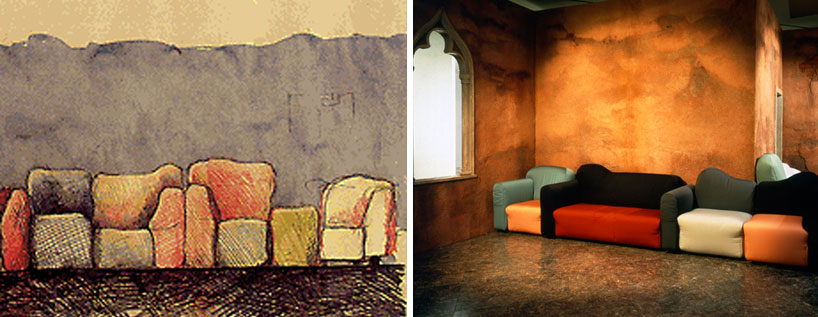
left: ‘cannaregio’, componible sofas, sketch, 1983courtesy gaetano pesceright: ‘cannaregio’, componible sofas,
DB: who would you like to design something for?
GP: a very serious problem is that most of the people have lost the connection with the society, they don’t work for the needs of society. they work for academic, esthetic and formal reasons. they risk being marginalized from real life. we have to answer peoples’ needs, create something useful, give joy and happiness.
DB: is there any designer in past who have influenced you a lot?
GP: yes I think mies van de rohe was a great innovator, he did a complete process, this type of real innovation always includes 3 things: innovation in language, material and technology.another figure who may be greater is michelangelo or caravaggio, leonardo for the multidisciplinary.
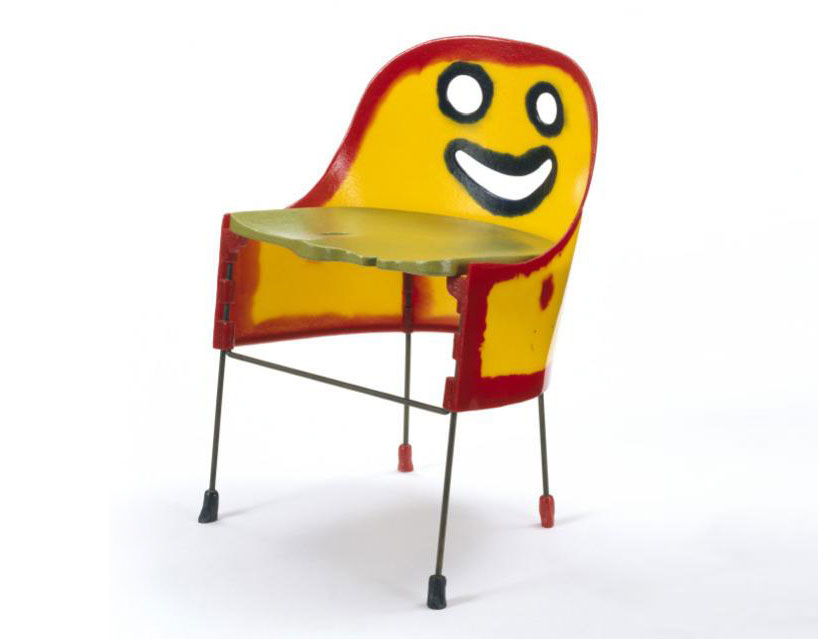
crosby chair, 1999, for de padovacourtesy gaetano pesce
DB: what about colleagues; are there any particular you appreciate?
GP: I think frank gehry is a very good architect, he’s the most interesting architect among traditional architects.
DB: which of your projects or designs has given you great satisfaction?
GP: I go from one thing to another, my work is not monolithic, so it’s difficult to say.
DB: describe your style, like a good friend of yours would describe it.
GP: when I was 17 I wrote , as an introduction to the catalogue of my first exhibition, that we have the right to be incoherent, meaning that we are free from ourselves, so there is no style, no repetition.
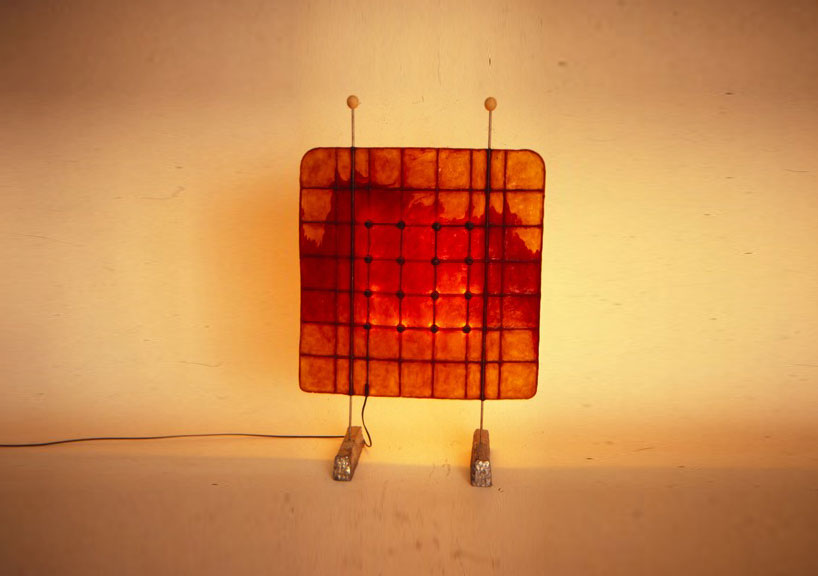
floor lamp, 1998courtesy gaetano pesce
DB: you told me you prefer to talk about men and women, you find it much more interesting than talking about design.
GP: yes, no..about feminility and masculinity. we are the product of a 5000 year history, we thought that the best way to think is the masculine way. using the masculine side of our brain. our best values were coherence, strength, homogeneity, dogmatism, seriousness, rigidity. it’s been a long time that I’ve thought we have to use the other side of the brain. the one we use when we joke or when we are drunk, without control. the female side of the brain is multidisciplinary, full of feeling, it is the bridge, joy, elasticity, softness, all the characteristics of this historic moment. so if you think about architecture, we have masculine architecture: rigid, abstract, sad, homogenuos, against the human body. we need feminine architecture, which is much more friendly to the human being.
DB: on the news they said that italians are afraid of unemployment, criminality and pollution. what are you afraid of for the future?
GP: no. europe in 1500’s, when they discovered america and an enormous expansion to another continent happened. we are in the same situation now. when life is not any more possible here, we’ll go to another planet.
